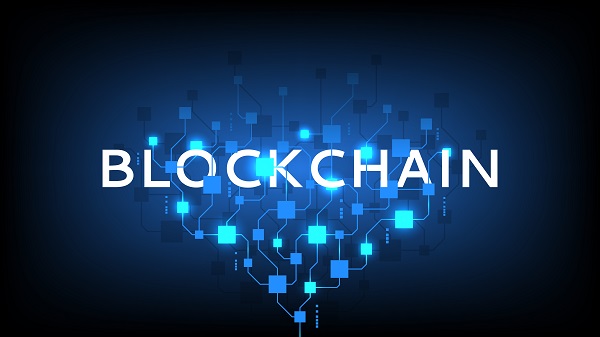Forget Crypto: How Blockchain Helps Improve Supply Chain Sustainability, Transparency

Until recently, brands had very little insight into what was happening in the furthest reaches of their supply chains. Immutable blockchain data has begun to play a central role in helping companies ensure compliance and earn trust in the global marketplace.
The world is moving towards more and more sustainability regulation. Upcoming mandates such as EU Due Diligence
rules and extended producer responsibility
(EPR) requirements will require major overhauls in conventional environmental, social and governance (ESG) models.
“In the past, third-party certifications have been useful in helping companies prove sustainability,” Jordan Wilsondirector of digital marketing at BanQutold Sustainable Brands®. “But like [new] regulations will come out and the ESG limit will be raised, I think so [certification alone] won’t cut it anymore.”
Calculations matter; and how they are measured matters. This is where blockchain comes in.
A blockchain is a distributed digital database containing a list of records called blocks. Together, these blocks are linked via cryptography – each block contains a link to the previous block, a timestamp and transaction data. This chain of blocks becomes a shared, immutable ledger that permanently and transparently records assets.
Blockchain has begun to play a central role in data visibility to ensure compliance in the global marketplace. It is audit-proof and tamper-proof; and once information enters, it cannot be altered – allowing stakeholders to follow a product’s global footprint from source to shelf through the blockchain ledger.
“Blockchain is a very nice way to ensure that data is immutable, real-time and from the source,” Wilson said. “It can be much easier to spot problems or red flags right away [with blockchain].”
Brands often have very little knowledge of what is happening in the furthest reaches of their supply chains – the scary place where externalities live far from the shiny glow of corporate offices and sustainability reports. The ability to capture source data up and down a supply chain vertical is game-changing information; and in a world of consumer demand and compliance policy, information is power: knowing how much you’re spending, where it’s happening and why allows you to make more strategic decisions about your suppliers.
Blockchain for sustainability
BanQu is a blockchain-powered traceability platform that allows brands to look under the hood of their supply chains and integrate this information into ESG reporting. BanQu allows brands to track a product’s journey from farm to consumer – providing a coherent line down the rabbit hole of modern procurement. Furthermore, blockchain breaks down communication silos within an organization – creating a universal instrument and enabling the alignment of ESG goals across an organization.
BanQu uses blockchain in its purest form: Creating an immutable record. All entities involved in a transaction can see the record on the blockchain – which provides greater transparency than conventional reporting methods. And this remains the same wherever it moves through a supply chain.
BanQu integrates multi-layered checks and balances – from NGO audits to SMS messaging among farmers to the immutable blockchain itself. The blockchain connects all these different parts of accountability together, forever.
“It’s an easy win if you put in the effort to do it,” says BanQu’s chief of staff
Katelyn Thacker. “And that’s a big win.”
Disconnect blockchain from crypto
Today, when people think blockchain, they often think cryptocurrency; and because of this blockchain has a trust and messaging problem. Recent crashes in crypto value, its newness and elitism, and the insane energy requirements associated with crypto mining haven’t helped blockchain’s reputation one bit.
BanQu uses the power of blockchain to build immutable records, not virtual assets. Crypto mining requires obscene amounts of energy – about 0.3 percent of all global carbon emissions. But the blockchain itself, especially for those using “proof of stake” or block grid technology, does not require energy-intensive mining. Along with renewable energy, blockchain platforms like BanQu are at the forefront of bringing the sector into the net neutral space.
Cryptocurrency is essentially a first-world problem; but that doesn’t mean blockchain has to be.
Most blockchain platforms, Thacker says, are designed to serve the end user—not the stakeholders in between. BanQu did the basic game first, then built a blockchain around it that could capture source-level data in a way that brands and suppliers can actually use.
“We didn’t start out as ‘let’s get on the crypto train and make the most of it,'” Thacker said. “We started with a platform that works for farmers, making it easy for companies to prove their sustainability goals and gain insight into procurement.”
BanQu was designed primarily to be easy to use in the lowest levels of the supply chain where negative externalities lurk and hide in the shadows. The platform is device agnostic to meet the technological needs of any user, even in remote regions. The raw, unaggregated real-time data provides immediate insight into supply chain movement to prove sustainability claims.
Blockchain does not capture all information on its own. Some data, such as carbon emissions, cannot be traced directly from the source; so, difficult to record data at the lowest levels of a supply chain must be extrapolated based on existing information or models from third parties. Fortunately, there are precise groups and standards that provide data points; and items such as energy bills can be linked to BanQu to allow accurate estimates of emissions and other missing information.
“In today’s age, sustainability is starting to equate to good business,” said Wilson. “Using technology for transparency and reporting is a great way to solve various sustainability pain points and align internal stakeholders so you can continue to grow your business and perform well without sacrificing profit.”
Rome was not built in a day; and complex supply chain networks cannot be mapped in a single leap. Like most things, starting small with achievable goals is the key to incorporating blockchain into transparency efforts. Start with a single item, build a collection of small wins and scale up—a step-by-step process that Wilson calls “peeling the onion.”
“People think this is prohibitive,” Thacker said. “But again, simplicity. Just keep it simple.”


























